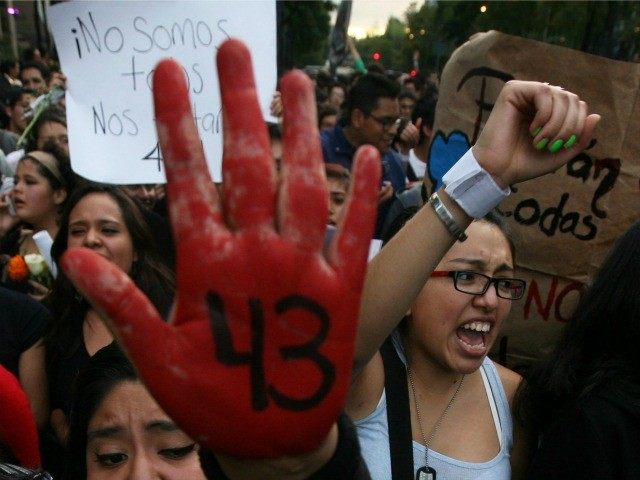As controversy continues to swirl around the case of 43 Mexican students believed to have been killed by cartel members, a renowned group of forensic experts is accusing the Mexican government of manipulating evidence and violating investigative protocols in order to support their version of events. Mexican authorities have denied the claims.
Based in Argentina, the Equipo Argentino de Antropología Forense (EAAF), the Argentine Forensic Anthropology Team, is a group of forensic anthropologists who were called in by the Procurador General de la República (PGR), Mexico’s Attorney General’s Office, to investigate the case of the missing students. The students, from the rural town of Ayotzinapa, in the State of Guerrero, were allegedly kidnapped by corrupt police officers and then murdered by members of the Guerreros Unidos cartel.
As Breitbart Texas previously reported, the theory put forth by the government has been questioned by many scientific skeptics. However, the most damning blow to the “official” version came from the EAAF, who issued a public statement and presented an independent report to the parents of the students that pointed out a long list of irregularities that disprove what the government has said about the fate of the 43 students.
The EAAF team made the explosive statement that there was no evidence to positively confirm that the students had been killed and burned in the Cocula city dumpster on September 27, 2014 as the PGR had claimed.
“They simplified enormously the evidence and only saw one possibility, which matches with the story they presented,” the EAAF statement stated (translated from Spanish). “Physical evidence has to be interpreted in all its possibilities, not favoring only the ones that match with the suspect’s testimony.”
One of the main errors, according to the EAAF, was the fact that the Mexican government did not have a chain of custody for the evidence; instead, they were simply coming up with evidence while the EAAF team was not present. That included the bone fragment that led to identifying one of the students. The team had not been present in the area where the fragment was claimed to have been found, and was summoned there after the fact and never presented with any chain of custody documents regarding that evidence.
Another one of the discrepancies deals with the claim that the bodies of the students had been burned in the town of Cocula’s dumpster. However, according to the EAAF, that dumpster had been the scene of many fires and the remains of another person not among the 43 students had also been found there. Essentially, the EAAF pointed out, the remains presented from that site could have been from other individuals and not the missing students as the government had claimed.

COMMENTS
Please let us know if you're having issues with commenting.